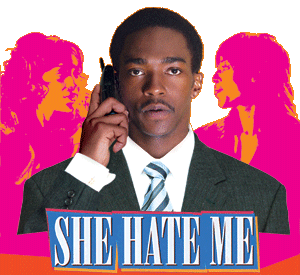Score one against activism?
The removal of the president of California's largest public pension fund has raised questions about whether pension funds, endowments and other big activist investors can keep wielding clout in corporate governance campaigns.
.
The change at the top of America's largest pension fund also underscores a growing awareness of the political and economic power lying largely untapped in the United States' retirement money - roughly $6 trillion - and an escalating dispute over how that power should be used. The fund, the California Public Employees Retirement System, or Calpers, manages $178 billion.
.
Sean Harrigan, who was removed as its president on Wednesday, said the action was a payback for the campaigns that he and others had been leading to change corporate behavior at companies like Walt Disney, Safeway, the New York Stock Exchange and Kohlberg, Kravis Roberts.
.
Even when the initiatives failed, they often pitted Harrigan, a union official, against business groups.
.
Harrigan had expected to lose his job, but he remained defiant. "Removing one person will not reduce the strength, the commitment nor the resolve to fight for our members," he said in a statement.
.
But other activists saw a much broader effort under way to change the leadership of many U.S. pension funds, which in the last few years have struggled because of market losses and increasing liabilities.
.
Richard Ferlauto, director of pension investment for the American Federation of State, County and Municipal Employees, said Harrigan's removal was an early success in a campaign to wrest control of pension money from a Calpers board now controlled by Democratic trustees and put it to work in projects more in keeping with Republican ideals. "Clearly, we're seeing a Republican attack on public pension systems," Ferlauto said. "And California has been targeted in a very strong way."
.
The Calpers board, with 13 members, has been dominated by Democrats in recent years. Ferlauto said he thought that if Republicans could regain control, they would seek to make two fundamental changes: put an end to the corporate activism Calpers has engaged in, and reshape the traditional, defined-benefit pension fund as something more akin to a 401(k) plan. "There will be a legislative attempt this spring to mandate that all plans in California become defined-contribution plans," he said.
.
A spokeswoman for the California Republican Party, Karen Hanretty, said that it had no position on how the state pension fund ought to be structured, but that one Republican state legislator was planning to introduce a bill in 2005 that would make it more like a 401(k) plan.
.
.
.
Frederick Rowe, a money manager in Dallas and the chairman of the Texas Pension Review Board, said he thought that Harrigan's dismissal would be seen as a warning by other institutional investors. The removal "would temper anybody's ambitions to be an activist, and I'm sorry about that," said Rowe, whose board monitors public pension funds in Texas.
.
.
Harrigan was removed from the Calpers board by a government body, the State Personnel Board, that handles labor-management issues for California's civil service. The Personnel Board has the authority each year to elect one trustee to the pension fund's board, and it had originally elected Harrigan in 1999 and returned him each year since then, until now. He was elected president in 2003. The Personnel Board voted three to two against Harrigan. The two Republicans who voted against him were joined by one of three Democratic members, Maeley Tom, who had supported Harrigan in the past.
.
To replace Harrigan, the Personnel Board elected Ron Alvarado, a 55-year-old Republican who was a Calpers trustee from 1996 through 1999.
.Pension fund firing puts clout in doubt
The removal of the president of California's largest public pension fund has raised questions about whether pension funds, endowments and other big activist investors can keep wielding clout in corporate governance campaigns.
.
The change at the top of America's largest pension fund also underscores a growing awareness of the political and economic power lying largely untapped in the United States' retirement money - roughly $6 trillion - and an escalating dispute over how that power should be used. The fund, the California Public Employees Retirement System, or Calpers, manages $178 billion.
.
Sean Harrigan, who was removed as its president on Wednesday, said the action was a payback for the campaigns that he and others had been leading to change corporate behavior at companies like Walt Disney, Safeway, the New York Stock Exchange and Kohlberg, Kravis Roberts.
Richard Ferlauto, director of pension investment for the American Federation of State, County and Municipal Employees, said Harrigan's removal was an early success in a campaign to wrest control of pension money from a Calpers board now controlled by Democratic trustees and put it to work in projects more in keeping with Republican ideals. "Clearly, we're seeing a Republican attack on public pension systems," Ferlauto said. "And California has been targeted in a very strong way."
.
The Calpers board, with 13 members, has been dominated by Democrats in recent years. Ferlauto said he thought that if Republicans could regain control, they would seek to make two fundamental changes: put an end to the corporate activism Calpers has engaged in, and reshape the traditional, defined-benefit pension fund as something more akin to a 401(k) plan. "There will be a legislative attempt this spring to mandate that all plans in California become defined-contribution plans," he said.
.
A spokeswoman for the California Republican Party, Karen Hanretty, said that it had no position on how the state pension fund ought to be structured, but that one Republican state legislator was planning to introduce a bill in 2005 that would make it more like a 401(k) plan.
.
.
.
Frederick Rowe, a money manager in Dallas and the chairman of the Texas Pension Review Board, said he thought that Harrigan's dismissal would be seen as a warning by other institutional investors. The removal "would temper anybody's ambitions to be an activist, and I'm sorry about that," said Rowe, whose board monitors public pension funds in Texas.
.
.
Harrigan was removed from the Calpers board by a government body, the State Personnel Board, that handles labor-management issues for California's civil service. The Personnel Board has the authority each year to elect one trustee to the pension fund's board, and it had originally elected Harrigan in 1999 and returned him each year since then, until now. He was elected president in 2003. The Personnel Board voted three to two against Harrigan. The two Republicans who voted against him were joined by one of three Democratic members, Maeley Tom, who had supported Harrigan in the past.
.
To replace Harrigan, the Personnel Board elected Ron Alvarado, a 55-year-old Republican who was a Calpers trustee from 1996 through 1999.
.
By Mary Williams Walsh
The New York Times




 Song for Cindy Sheehan Video
Song for Cindy Sheehan Video




































 Madeleine BAROUKHEL-MOUREAU
Madeleine BAROUKHEL-MOUREAU 



























